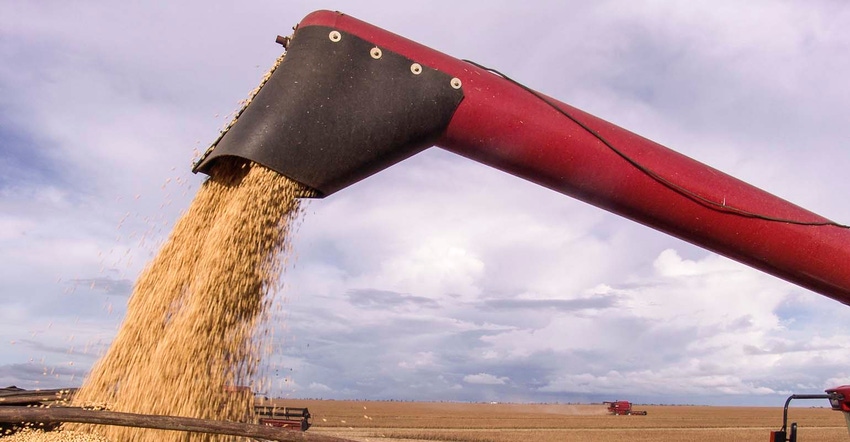
It looks like this season’s light La Nina rain patterns haven’t disrupted Brazilian crop progress, nationally, as much as some had speculated earlier.
AgRural, a South American consultancy, said on Friday that the nationwide harvest has covered 6.4% of the planted area so far, which is pretty close to the five-year average of 6.5%. Perhaps those with shorter memories—or higher hopes—feel they’re running behind because national harvest progress by the end of January last year was all the way up to 10%. Years like that don’t often repeat.
Those are national numbers, and state progress estimates vary widely. In Mato Grosso the consultancy says farmers there are 20.5% done, according to one Brazilian business publication.
Meanwhile, yields aren’t looking bad. It’s hardly fair to compare everything this year against 2016-17, but, at an estimated 48.2 bushels per acre, they’re slightly down from last year’s 49.4 b\A record.
But it’s different in lots of locations.
Take soy producer and ag engineer Naildo Lopes, up in Nova Mutum, in the central part of Mato Grosso. He and his team consult for 50 or so farmers on around 80,000 acres, mostly soybeans and corn. In his part of the state, he says, producers suffered dry weather at planting, so that planting was delayed. And that itself was followed by irregular rains, including 20-day and an eight-day dry spells in the crucial period between just before Christmas and the third week of January.
“The dry weather and high temps affected normal plant development,” Lopes says, “lowering yield potential. But now harvest has started and the rains (which have returned) are causing producers a lot of problems.”
In Lopes’ area, most harvesting got started by January 31st, but now the combines are parked in sheds, and had been for five straight days by the time we talked over the weekend.
Of the little bit Lopes and his clients have managed to bring in so far, early yields are at an average of 44½ bushels an acre. But that’s local: the statewide 2017-18 soy yield is projected at 48.2 b/A.
Second-crop corn
Meanwhile, the pressure’s on for those central Mato Grosso producers to get the beans out and the second-crop (safrinha) corn in, he says, as the optimum planting window slams shut by February 20. Some of his neighbors have managed to get some of the second crop planted (following the soybean combines in the fields with corn planters right behind), but, again the steady rains are cutting into time in the field.
“Our area is likely to produce 30% less second-crop corn than last season due to high production costs,” he says. No doubt those high production costs would be somewhat easier to swallow if farmers weren’t getting ever-more concerned about losing money on a second crop planted increasingly closer to that February 20 drop-dead date.
With the general lack of crop insurance—at least of crop insurance that, as Lopes says, “covers producer income” - the risks are mounting.
The opinions of the author are not necessarily those of Farm Futures or Farm Progress.
About the Author(s)
You May Also Like






